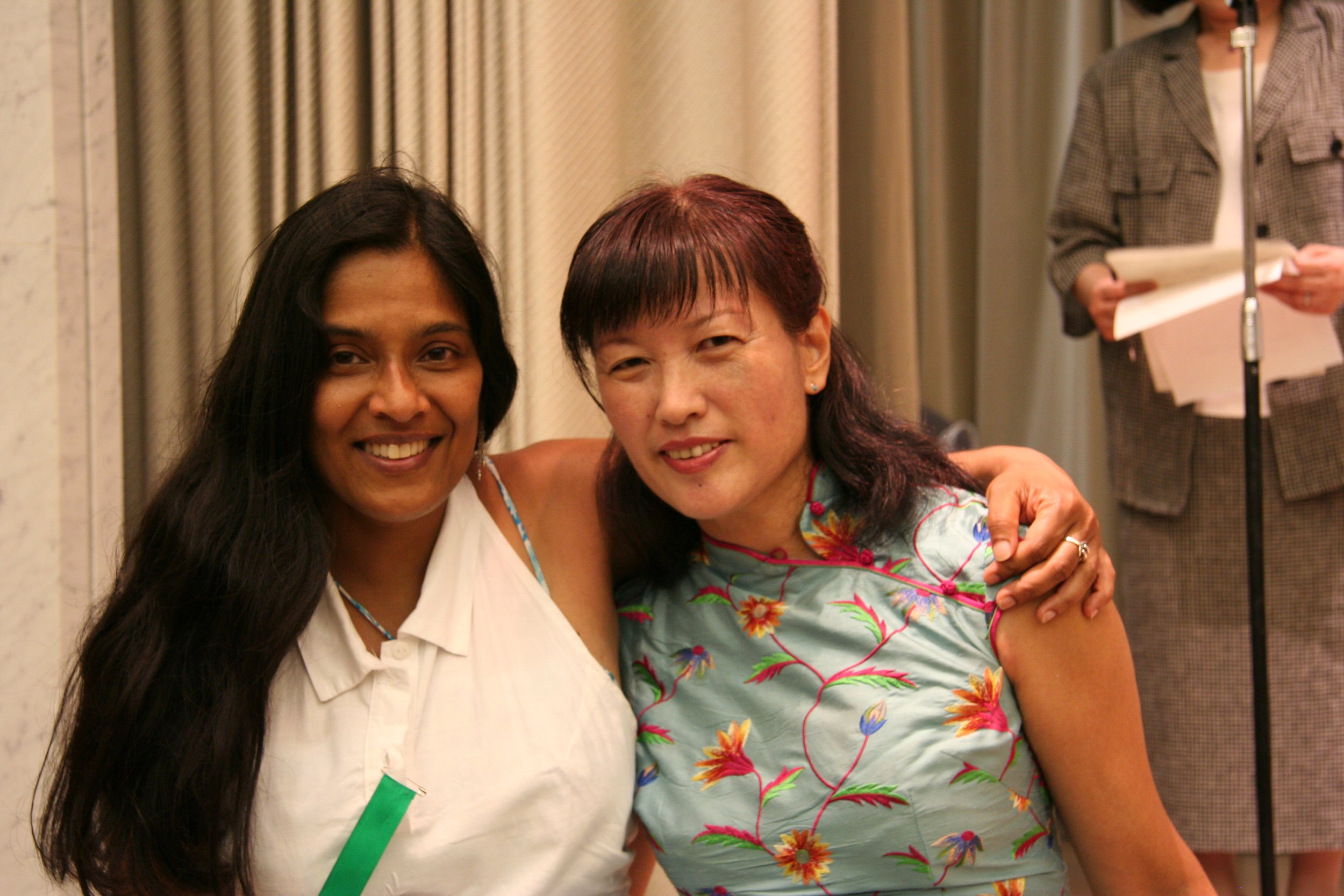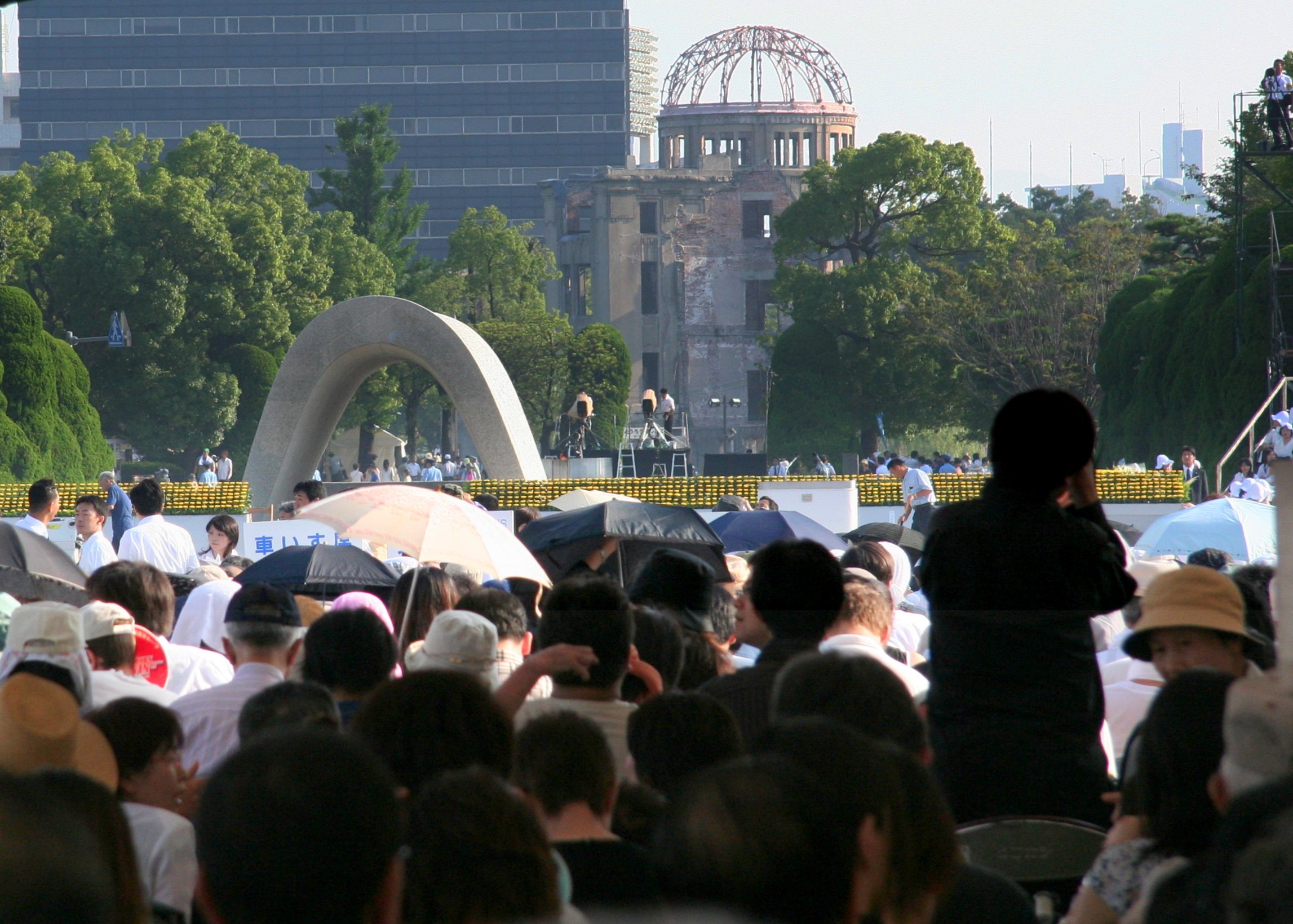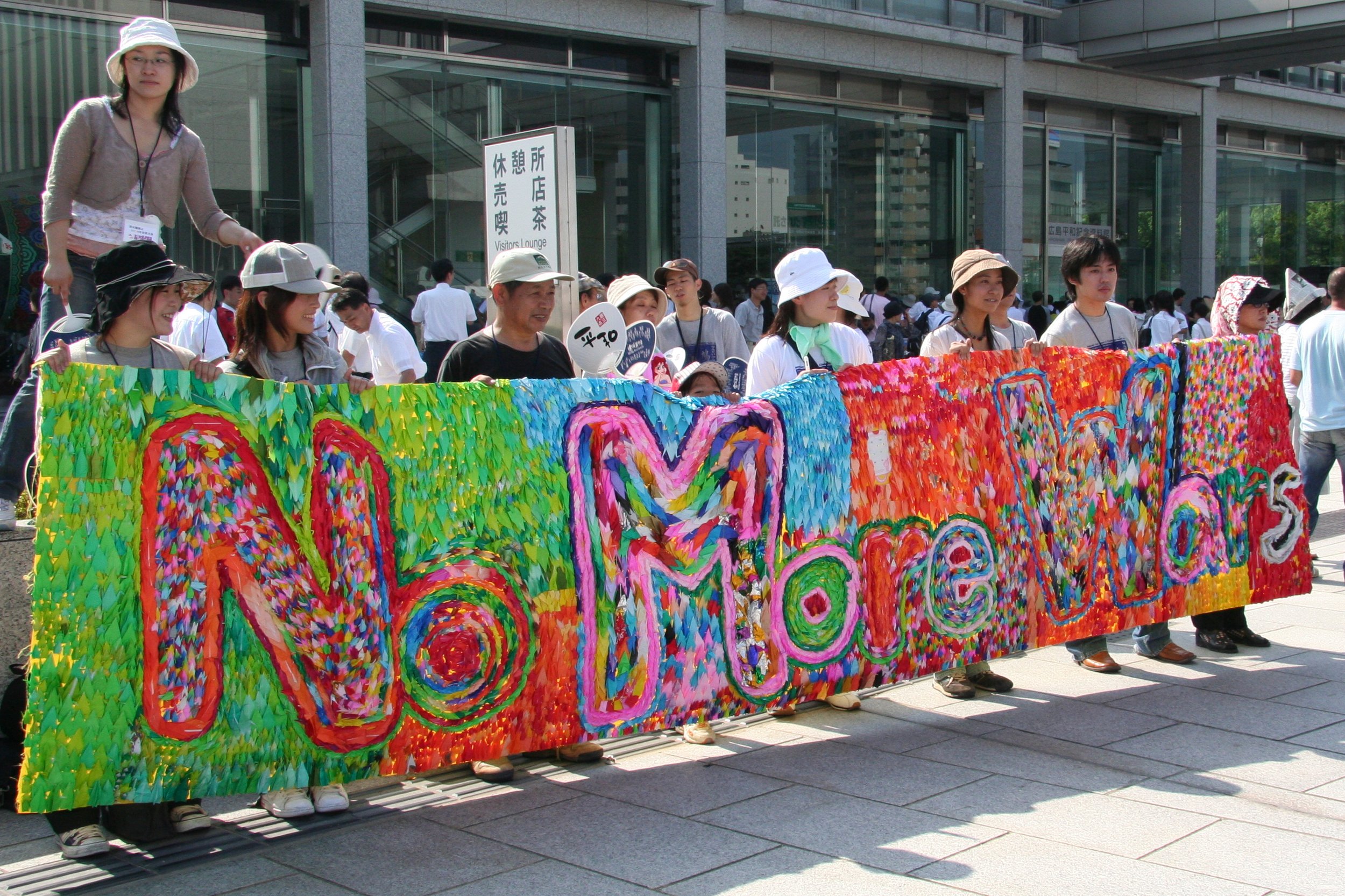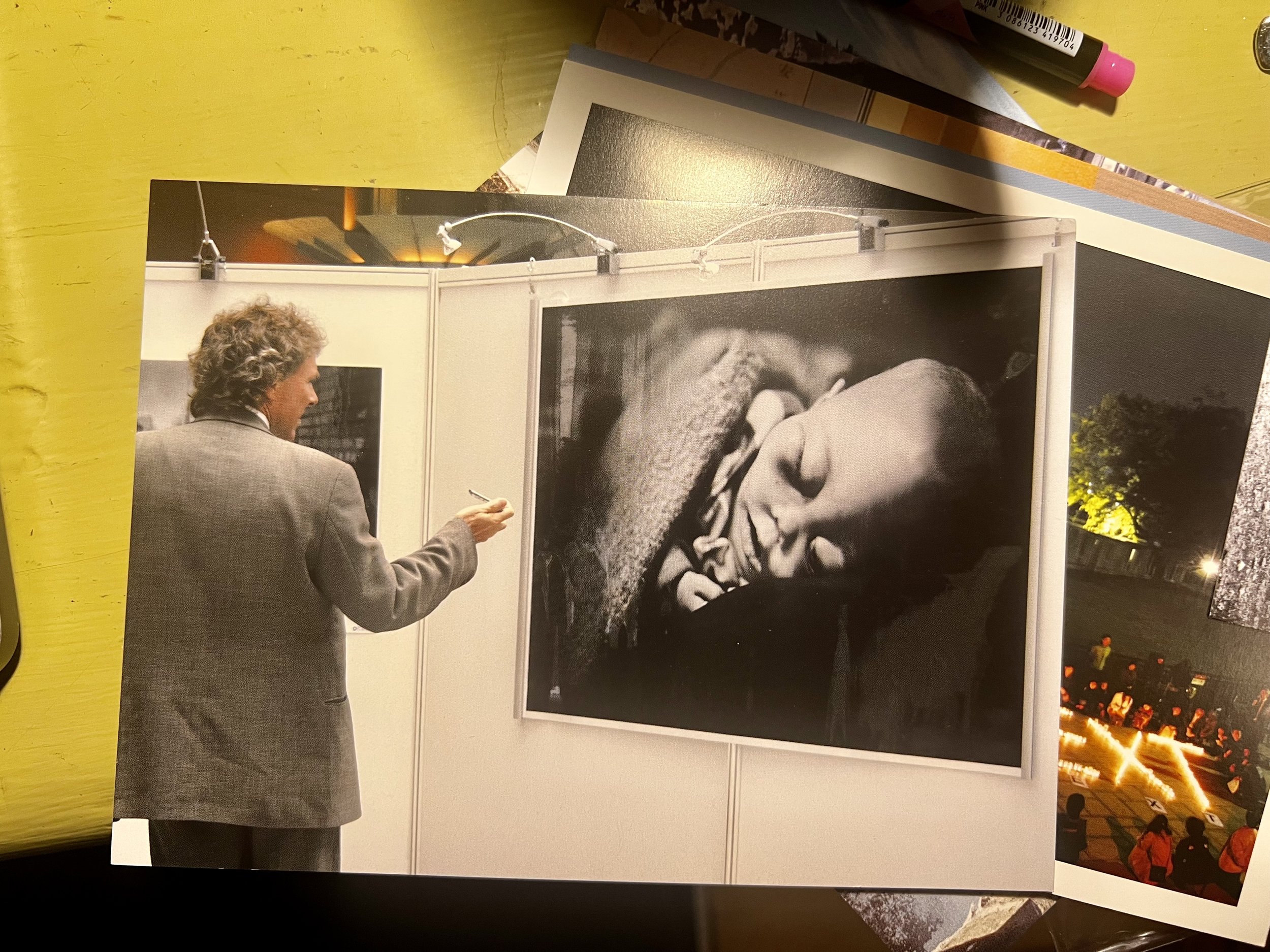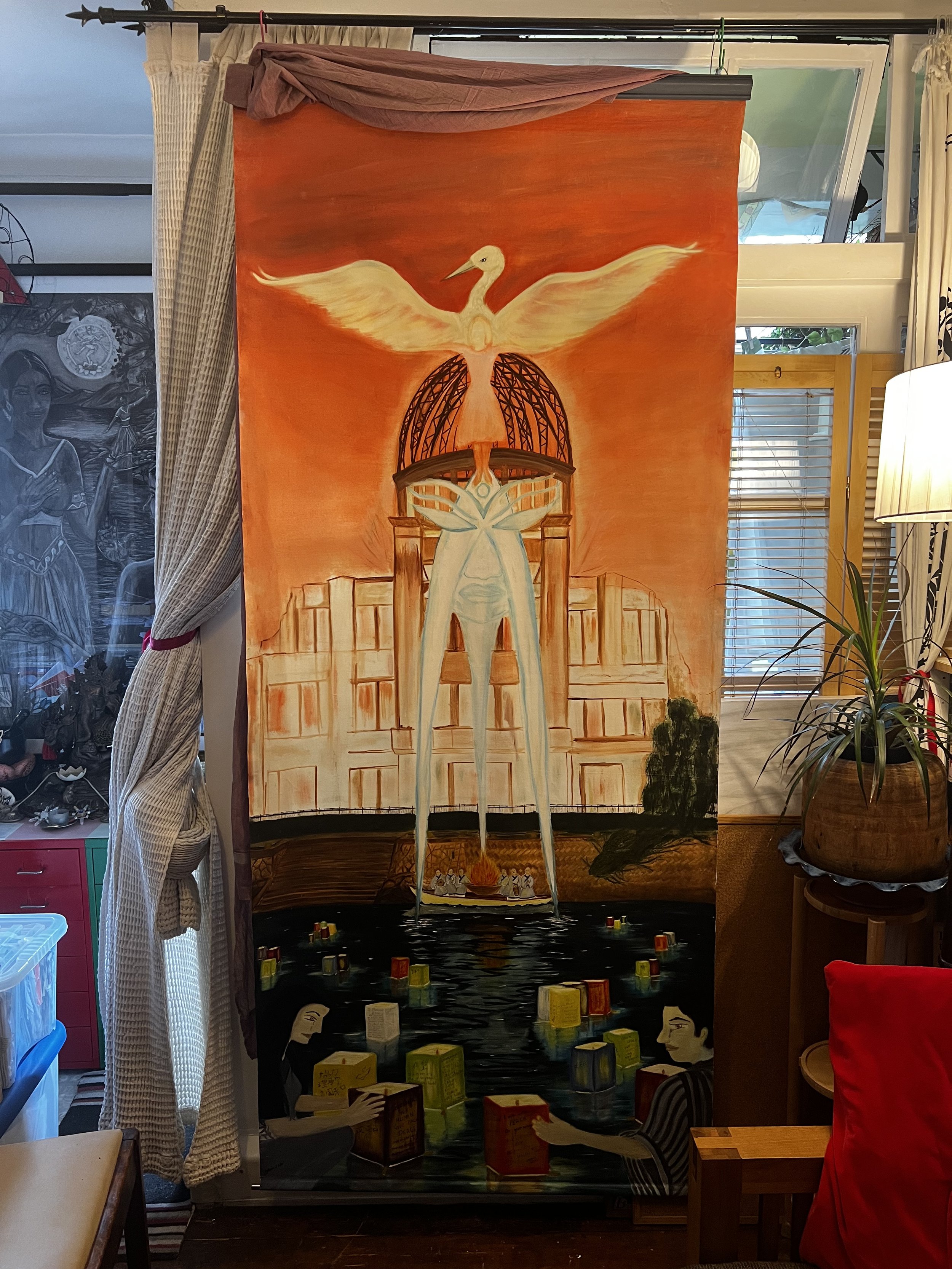On behalf of London CND, Daniel Britton recently had the opportunity to sit down with Apolonia J. Lobo—an artist, activist, and passionate advocate for nuclear non-proliferation. In the comfort of her flat in northwest London, Apolonia shared the remarkable story of how an unexpected visit to Hiroshima in the summer of 2006 got her involved.
The experience she shared moved her, not just to become active, but also to inspire her to create art that captures the emotional intensity of her time there. Our conversation took place shortly after the 79th anniversary of the Hiroshima bombing in Tavistock Square, where Apolonia first introduced herself and her journey. Looking ahead to the 80th anniversary, we share her story.
Apolonia started the conversation in 2006 when her then-partner, Francesco, was invited to attend the third International Coalition to Ban Uranium Weapons (ICBUW) conference in Hiroshima as a moderator and technical expert. The four-day event, focusing on the impact and use of uranium-based weapons, initially seemed like an opportunity meant for Francesco alone. Yet, despite having no formal ties to the conference, Apolonia, a freelance artist by trade, soon found herself drawn to the powerful message being conveyed. With her camera, originally bought for personal use, at the organisers' request she found herself supporting by taking photos of the event.
The conference began with the laying of wreaths ceremony at the Hiroshima Peace Memorial, a solemn moment of remembrance that set the tone for the days ahead. Over five long days, Apolonia immersed herself in discussions spanning the scientific, political, and humanitarian dimensions of depleted uranium (DU). From 9:30 in the morning until 7 in the evening, she opened her eyes to the long-lasting effects of DU and nuclear weapons. One of many emotionally charged moments, she recited listening to soldiers recount the harrowing news of Gulf War Syndrome affecting their children, and doctors who described patients having to turn to expensive black-market medications to manage exposure to DU.
Laying of the wreath ceremony, Atomic Bomb Dome in the distance
The emotional weight of the conference was compounded by Apolonia’s visit to Hiroshima’s Peace Museum. A solitary experience that moved her to tears: “It wasn’t just the facts and the story of how it happened,” she recalled, “it was the survivors’ paintings and their expressions of suffering”. The five-day event saw a wide range of speakers, activists, and politicians come out in opposition to DU weapons and set the scene for Apolonia’s further involvement.
Apolonia at the confrence
At the end of the conference, attendees joined the public for the official ceremony at the Hiroshima Peace Memorial on 6th August. With speeches from Hiroshima Mayor Tadatoshi Akiba and Prime Minister Shinzo Abe, peace doves were set a flight. The evening culminated with floated lanterns bearing messages of hope and peace along the Motoyasu River as Buddhist monks recited prayers.
Closing ceremony
““I write to my MP and get nothing but a generic email”[...]“but the Dalai Lama? I had his signature in days.””
Later that year, Apolonia travelled to India for medical treatment. Not far from Dharamshala, inspired by her time in Hiroshima and a book she had read by the Dalai Lama on the environment, she set out on a four-hour round trip to deliver a letter to the Buddhist monk, petitioning that he sign an appeal against the use of depleted uranium. To her surprise and delight, within three days, she recalls receiving a call confirming that the Dalai Lama had signed the petition, she quipped: “I write to my MP and get nothing but a generic email”[...]“but the Dalai Lama? I had his signature in days.”
In 2007, a year after the Hiroshima conference, Apolonia attended an exhibition at the European Parliament featuring the work of Naomi Toyoda, a Japanese photographer whose images continued to resonate deeply with her. This time officially the photographer for the event, Apolonia alighted on one photograph she had taken of Toyoda’s—visitor to the EU Parliament—"A man gazes at a photo of 5-year-old Omar who suddenly developed leukaemia” (Iraq) (see below). She explained how this powerful visual connected the stories she had heard to a real human tragedy. Dr Caroline Lucas was also present at the EU exhibition along with German and Dutch MEPs; all spoke in support of “The Human Cost of Uranium Weapons” exhibition 14-16 May 2007.
These experiences—both in Hiroshima and Brussels—ultimately led Apolonia to create a piece of art she titled “In Memoriam: Sadako’s Wish.” The piece is a tribute to Sadako Sasaki, a young girl who died at the age of 12 after contracting leukaemia from radiation exposure in Hiroshima. Revisiting and touching up the piece for the first time in years, Apolonia tells me the emotions of her time in Hiroshima came flooding back.
The accompanying blurb to the piece reads:
“Sadako Soul takes wing as a beautiful white crane, a symbol of peace over the A-dome, while Buddha presides, his countenance and meditation somewhat stern as lessons have yet to be learned regarding the maintenance of peace on the Motoyasu River. Buddhist monks chant for the souls of the dead and stoke the fire symbolic of the flame that burns in Hiroshima, the flame that was lit by a survivor, a fireman from the fire that swept Hiroshima after the A-bomb was dropped and which will not be put out until the day all humanity is nuclear-weapon-free. Creeping green foliage, like a shadowy green dragon emanating from the weeping willow, represents nature, life that goes on, hope that that which was obliterated will return. But the dragon may also represent the shadow side we refuse to recognise, using the mask of so-called civilisation and acting out the hideous and heinous, destroying that which sustains us all ultimately.”
In the years since Apolonia’s activism has extended beyond nuclear non-proliferation. She has also been a vocal advocate together with the ME Community against the National Institute for Health and Care Excellence (NICE) guidelines for ME/CFS which went to court in 2009 when the ME Community lost. NICE subsequently changed their minds over 10 years later and the guidelines have been amended in 2021. In 2009, she also held an exhibition at the Royal Society of Medicine at a conference regarding ME/CFS, which included art, photography, and poetry.
Apolonia's story is moving and underscores the importance of activism from our members. Her journey from a freelance artist documenting a conference to an impassioned advocate for nuclear disarmament illustrates the potential for art, activism, and spirituality to intersect in deeply meaningful ways. Her reflections offer a timely reminder of the devastating legacy of nuclear weapons and the urgent need for nuclear disarmament.
In a world that often feels weighed down by darkness, Apolonia’s story reminds us that art and activism, rooted in compassion and conviction, can still light the way forward.
Apolonia at the end of the interview with the piece inspired from her time in Hiroshima
